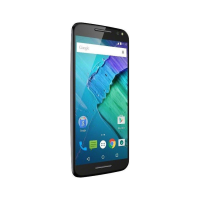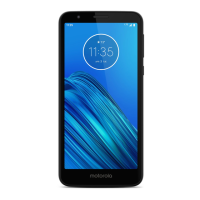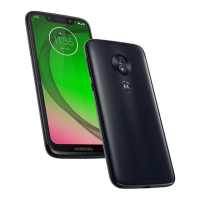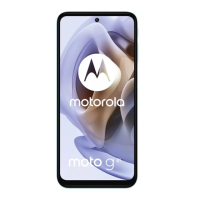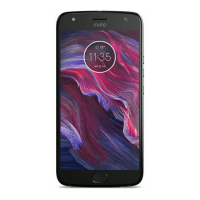
Do you have a question about the Motorola Moto X4 and is the answer not in the manual?
| Screen shape | Flat |
|---|---|
| Pixel density | 424 ppi |
| Second display | No |
| Display diagonal | 5.2 \ |
| Touch technology | Multi-touch |
| Touchscreen type | Capacitive |
| Native aspect ratio | 16:9 |
| Rounded display corners | Yes |
| Processor cores | 8 |
| Processor family | Qualcomm Snapdragon |
| Processor frequency | 2.2 GHz |
| RAM capacity | 3 GB |
| Memory card slot type | Hybrid slot |
| Compatible memory cards | MicroSD (TransFlash) |
| Maximum memory card size | 2000 GB |
| Internal storage capacity | 32 GB |
| Flash type | LED |
| White balance | Auto |
| Rear camera type | Dual camera |
| Front camera type | Single camera |
| Maximum frame rate | 60 fps |
| Video recording modes | 480p, 720p, 1080p, 2160p |
| Rear camera aperture number | 2 |
| Resolution at capture speed | 640x480@30fps, 1280x720@30fps, 1920x1080@60fps, 3840x2160@30fps |
| Rear camera resolution (numeric) | 12 MP |
| Front camera resolution (numeric) | 16 MP |
| Second rear camera aperture number | 2.2 |
| Second rear camera resolution (numeric) | 8 MP |
| Second front camera resolution (numeric) | 4 MP |
| 4G standard | LTE |
| 2G standards | EDGE, GSM |
| 3G standards | HSPA+, UMTS |
| SIM card type | NanoSIM |
| Wi-Fi standards | 802.11a, Wi-Fi 5 (802.11ac), 802.11b, 802.11g, Wi-Fi 4 (802.11n) |
| Bluetooth version | 5.0 |
| 3G bands supported | 850, 900, 1700, 1900, 2100 MHz |
| 4G bands supported | 700, 800, 850, 900, 1700, 1800, 2100, 2600 MHz |
| Bluetooth profiles | A2DP |
| SIM card capability | Hybrid Dual SIM |
| 2G bands (primary SIM) | 850, 900, 1800, 1900 MHz |
| Mobile network generation | 4G |
| Subscription type | - |
| USB version | 3.2 Gen 1 (3.1 Gen 1) |
| USB connector type | USB Type-C |
| HDMI ports quantity | 0 |
| Headphone connectivity | 3.5 mm |
| Multimedia Messaging Service (MMS) | Multimedia Messaging Service (MMS) is a standard way to send messages that include multimedia content to and from a mobile phone over a cellular network |
| Color name | Sterling Blue |
| Form factor | Bar |
| Product color | Blue |
| Housing material | Metal |
| Protection features | Dust resistant, Water resistant |
| International Protection (IP) code | IP68 |
| Themes | Wallpapers |
| Graphics card | Adreno 508 |
| Personalization | Icons, Menu, Shortcuts |
| Personal info management (PIM) | Alarm clock, Calculator, Calendar |
| Platform | Android |
| Google applications | Google Maps, Google Play, YouTube |
| App distribution platform | Google Play |
| Operating system installed | Android 7.1.1 |
| Talk time (3G) | - h |
| Battery capacity | 3000 mAh |
| Body SAR (EU) | 1.54 W/kg |
| Certification | CE |
| Head SAR (EU) | 0.815 W/kg |
| Speakers | stereo |
| Audio formats supported | AAC, AAC+, FLAC, MP3, WAV |
| Image formats supported | JPG |
| Video formats supported | H.264, MP4 |
| Depth | 7.99 mm |
|---|---|
| Width | 76.4 mm |
| Height | 148.35 mm |
| Weight | 163 g |
Guide to start-up and phone features, including tips and safety information.
Advice for using the phone, covering setup, help resources, and important notes.
Quick overview of phone capabilities, features, and how to find them.
Instructions for inserting SIM and microSD cards into the phone.
Steps to charge the phone and turn it on for the first time.
Information about the phone's water resistance and tips to prevent damage.
Guidance on signing into your Google account for setup and data syncing.
Tips and settings to optimize battery usage and extend battery life.
Overview of the phone's main screen and app navigation.
Understanding icons and managing alerts on the status bar.
Adjusting ringtone, media, and alarm volumes, and managing interruptions.
Instructions for downloading applications from Google Play and other sources.
Managing app permissions, uninstalling, and troubleshooting apps.
How to check for and install phone software updates.
Explore special features designed to save time and make tasks easier.
Lock, unlock, and navigate your phone using the fingerprint sensor.
Securely access apps and websites using your fingerprint.
Use voice commands to get information and control your phone.
Learn phone gestures, touch controls, and voice commands.
How to turn the screen on/off, set screen locks, and manage notifications.
Adjusting ringtones, notification sounds, and display settings.
Customizing the home screen with wallpapers, widgets, and shortcuts.
Accessing common settings like Wi-Fi, Bluetooth, and brightness.
Using voice commands to control the phone and perform tasks.
Screen reader for visually impaired users; reads screen content aloud.
Adjusting volume levels for media, alarms, and notifications; setting vibration.
Magnifying the screen for better visibility, including pinch-to-zoom.
Adjusting screen brightness, including automatic adjustment.
Instructions on how to dial numbers, call contacts, and use the dial pad.
How to answer, ignore, and end incoming calls.
Viewing call history, returning calls, and managing call log entries.
How to make emergency calls, even when the phone is locked.
Adding new contacts with names and details.
How to initiate calls, texts, or emails to contacts.
Managing existing contacts, including editing, deleting, or hiding them.
Importing contacts from social networks, email, or SIM cards.
Sending contact information via message, email, or Bluetooth.
Sending and receiving messages and pictures.
Changing the primary app used for sending and receiving messages.
Sending and receiving emails from various accounts using the Gmail app.
Making and receiving video calls using the Google Duo app.
Using the on-screen keyboard for typing and gestures.
Customizing keyboard style, managing suggestions, and editing the dictionary.
How to cut, copy, and paste text within and between apps.
Setting alarms, using the timer, and managing clock settings.
Viewing and managing events, appointments, and schedules.
Storing and accessing files like photos, videos, and documents.
Printing photos and documents from the phone.
Downloading apps, music, movies, books, and games.
Accessing weather, traffic, schedules, and using Google Assistant.
Getting context-aware information from the screen using Google Assistant.
Navigating the web using the Chrome browser.
Connecting to the internet via Wi-Fi or mobile network.
Downloading files, pictures, apps, and updates from the web.
Using Incognito mode, managing history, and blocking pop-ups.
Capturing still images using various camera modes and settings.
Recording video clips, including using slow motion and capturing stills during video.
Using depth effects to blur backgrounds or change focus in photos.
Using the camera to scan barcodes, QR codes, and business cards.
Managing, sharing, and using photos/videos as wallpapers or contact photos.
Taking screenshots of the phone's display.
Streaming, buying, saving, and playing music; creating playlists.
Creating, editing, and managing music playlists.
Downloading music for playback without an internet connection.
Using GPS voice navigation and finding locations with Google Maps.
Obtaining turn-by-turn directions to a specified address or location.
Adjusting the map view by zooming in or out.
Rotating and tilting the map view for better perspective.
Connecting to Bluetooth devices like headsets and speakers.
Connecting to Wi-Fi networks for internet access.
Transferring files between the phone and computer using a USB cable.
Using the phone as a Wi-Fi hotspot or USB tethering.
Sharing content and making payments using Near Field Communication.
Tracking mobile data uploads and downloads.
Turning off all wireless connections quickly.
Setting up a pattern, PIN, or password to secure your phone.
Keeping a specific app or screen visible for easy access.
Backing up phone data to Google account and restoring it.
Restoring the phone to factory settings, erasing all data.
Accessing tutorials, user guides, FAQs, and support resources.
Steps to take if the phone becomes unresponsive.
Using the phone's FM radio functionality.



